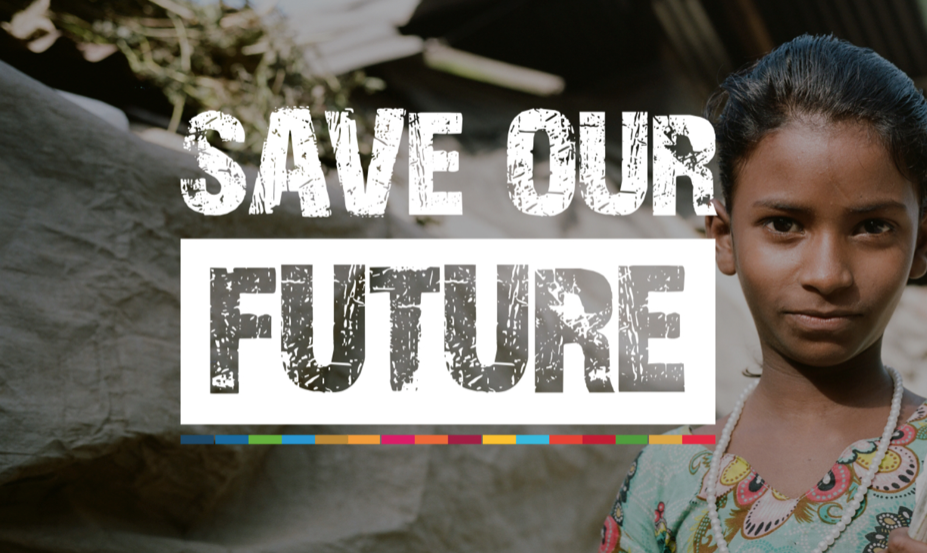Sometimes when you’re in a dark place, you think you’ve been buried, but you’ve actually been planted.
–Christine Caine
The COVID-19 crisis will be remembered for its overwhelming dimensions: the worst health and economic emergency in a century, a global reckoning of racial and social injustice, an escalating climate crisis, and the shuttering of schools and workplaces – all these emergencies compounding one another, and all in need of urgent attention.
As education advocates, our primary concern has been the pandemic’s impact on the lives of children around the world. They are suffering, missing out on learning, and losing their only meal of the day, their place of safety, and their source of hope for the future.
We have become deeply aware that, in a desperate effort to address the pandemic’s health and economic shocks, governments will be spending large amounts of money ($10-20 trillion globally) through stimulus packages to address the immediate consequences, and may have little left to invest in education.
This is why an unprecedented coalition of international organizations has united to launch the Save Our Future White Paper. It presents a joint statement on COVID-19’s impact on education and sets out an evidence-based roadmap with concrete actions to build education systems back better and calls on countries to invest. The message is loud and clear: if we do not act urgently, the education crisis could turn into a catastrophe from which millions of children may never recover.
The priority must be, of course, to get children back to school safely. However, this will not be enough. The White Paper puts forward a number of key actions which will require a shift in three areas:
1. Recognize the true scale of the education crisis, not just the impact of the pandemic
The current context has put a spotlight on what it means to be out of school, to be unable to learn, and to be unequipped to plan for the future. At the height of the crisis more than 90 percent of the world’s children – 1.6 billion children and youth – had their education disrupted, with no clear answers on when or how they would be able to return to school.
But even before the pandemic, more than half of children in the developing world were unable to read at the age of 10 and close to 70 percent would reach adulthood without the skills needed to thrive. The tragedy of the pandemic is that it may shine a spotlight on those whose education has been disrupted by COVID-19 but not necessarily on those who didn’t have access to a quality education in the first place.
We need to act urgently to support the children whose learning has been set back by COVID-19 without forgetting those who were already left behind before the pandemic.
Figure 1: Commit to addressing the true scale of the learning poor

2. Commit to transforming education, not just fixing the old model
Education is clearly a victim of the pandemic, but it is also the solution to the longer-term recovery. Education creates the health workers and entrepreneurs of the future. It benefits the economy and individual incomes. Education, especially for girls, is the vaccine for healthier populations and a healthier planet. Education increases peace and stability and is at the heart of the entire sustainable development agenda. Educated youth become the activists, politicians, and innovators who can create a better future.
Sadly, our education systems have not been set up to deliver on this promise. The crisis provides an opportunity to create safer school environments for students and educators; transition from standardized to inclusive, engaging, and adaptive education; move from overly-burdened teachers to learning teams with learners at the center; and focus on harnessing technology where it is proven to be most effective and most equitable.
Figure 2: Commit to transforming the education workforce

3. Commit to working together, not just coming together
Henry Ford famously said that coming together is a beginning, keeping together is progress, and working together is success.
The international education community has generally not been a vanguard for collaboration. One silver lining of the current crisis is that it has forced us all to recognize that we are stronger and more effective together. We must now put this into practice and reach out across organizations, across sectors, across countries, and across movements to create a truly universal call to action for education. The Save Our Future White Paper is an important step forward in forging a common action plan and reinforcing each other’s efforts.
Supporting this common vision will require increasing investment in the sector. Just as governments need to take urgent action to reopen schools, provide alternative pathways for learning, and target much-needed resources to ensure no child is left behind, education budgets are threatened by slow or negative GDP growth, the prioritization of health and economic recovery, falling household budgets due to lockdowns and job losses, and reductions in aid flows. While the future is uncertain, the likeliest scenarios point to an annual financing gap of between $178 and $193 billion to reach the global education goals by 2030 – an impossible gap to fill unless we come together to harness all available resources and innovative instruments and invest now.
Let’s seize this opportunity to reimagine and reboot education in bold ways, developing a new vision for children in the decade ahead. Although we may feel like we are in a dark place, let’s recognize we’ve actually been planted and use this moment for growth and the regeneration of our education systems that the world’s children so desperately need.

